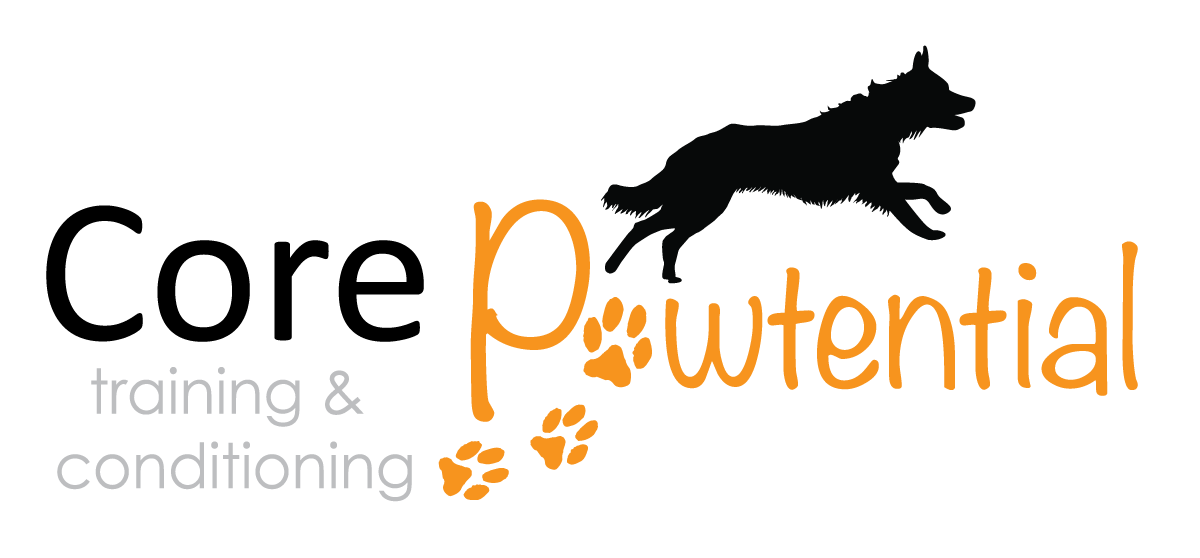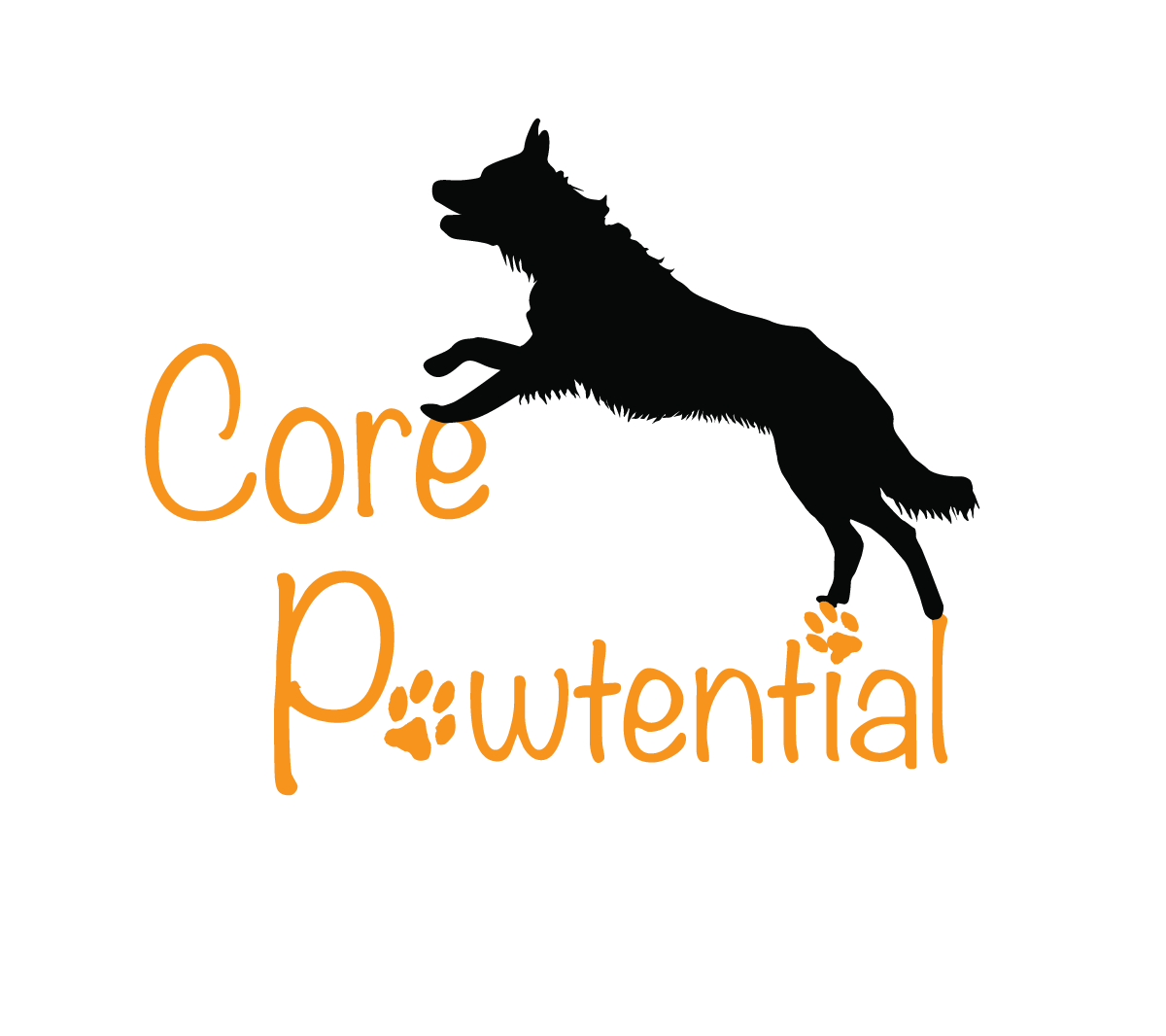
Rushing a Dog's Body is Stealing Soundness from Their Future
Even though I know better, I must admit we've all felt it—the desire to do a little more, go a little faster, and maybe, try it a bit sooner.
Maybe my puppy is showing such promise that I cannot help but skip a few foundation steps and jump to more advanced, flashy skills. Perhaps my dog is cleared by my rehab vet/PT to return to training after an injury, and I am eager to make up for lost time.
But is that flashy skill worth my dog's long-term soundness?
When we rush our dogs, we are trading OUR desire and ambition for their well-being. The dog who debuted at 18 months and got their MACH at 2yo may suffer chronic issues by 5yo. Whereas the dog whose handler took their time may get their MACH at 5yo, but remain sound until their retirement at 11yo.
Your dog doesn't know what they're missing when you skip that trial to give them an extra rest week. They don't feel disappointed when you spend another month on foundation work before moving up a level.
But they will feel—every single day—whether they move through the world with comfort and confidence, or with compensation and discomfort.
Your dog's future self is counting on you to be patient with their present body.
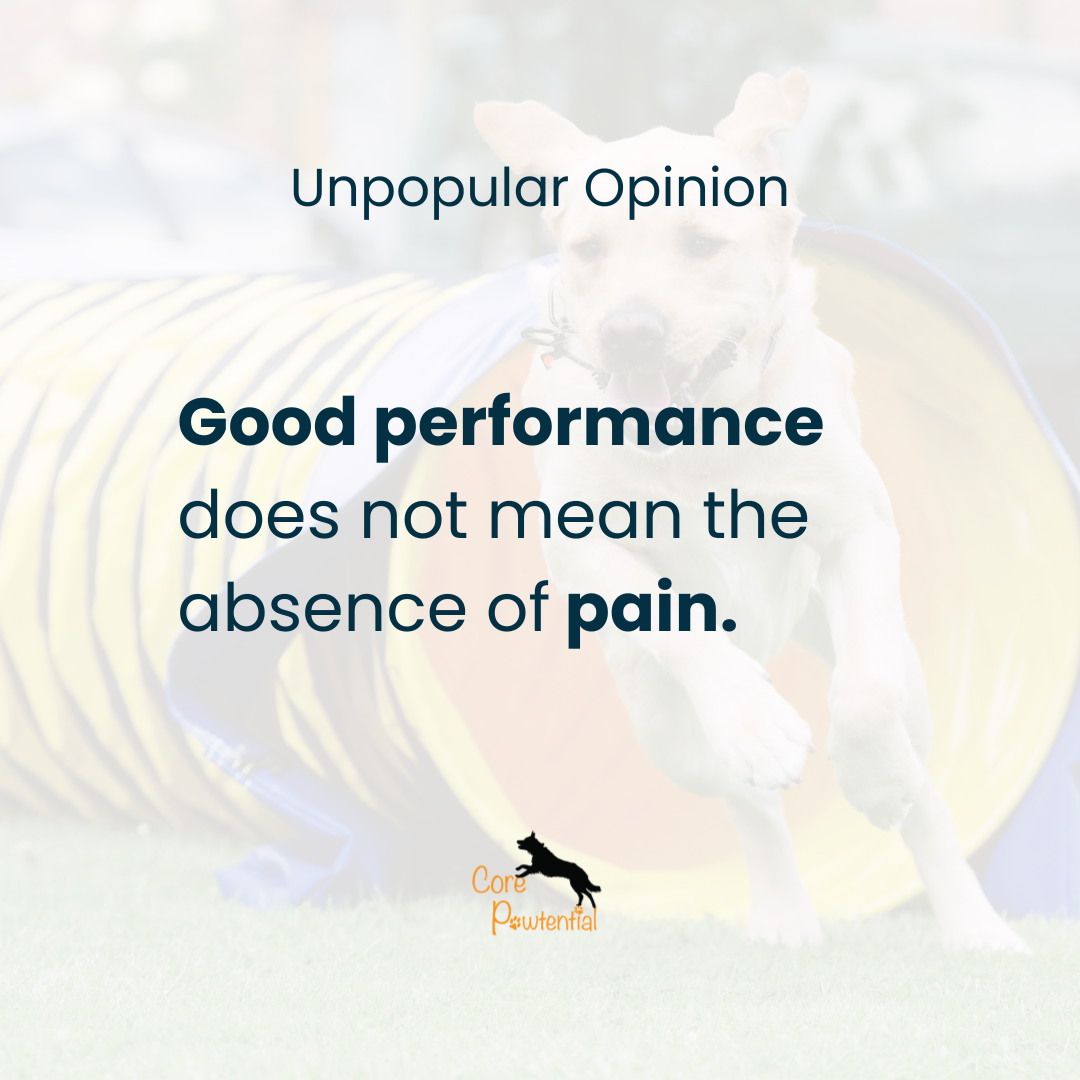
Good performance does not mean the absence of pain
It’s easy to think: If my dog is performing well in [insert your sport], they must not have any discomfort or pain, right?
That’s probably wrong.
More often, it just means they are excellent at compensating.
Just because your dog performs well does not mean they are pain-free.

Rest between Sets: The missing piece in Canine Conditioning?
How much time should I allow my dog to rest between sets?
Rest periods are crucial for recovery, focus, and proper form during canine conditioning. There’s no universal formula, but generally, strength and balance exercises require longer rest, while body awareness and endurance exercises benefit from shorter rest.
Many dogs will keep working even when fatigued, making it our responsibility as handlers to ensure adequate rest periods in our conditioning session. By observing subtle changes in movement, posture, and behavior, we can assess when a dog is ready for the next set of exercises. By thoughtfully adjusting rest periods, not only can we optimize conditioning outcomes, but also reduce potential risks of injury, ensuring each training session is both effective and safe.

Rethinking Reps and Sets in Canine Conditioning
When it comes to canine conditioning, questions often arise about the appropriate number of reps and sets.
How many reps should I do for this exercise?
How many sets should I complete with my dog?
I view these as guidelines rather than strict measures of progression. Each dog’s conditioning plan must be tailored to their unique needs and circumstances. Just as there is no one-size-fits-all program, there is no universal standard for the number of reps and sets.
Instead, these should be determined by the dog's current physical and mental condition, specific goals, and understanding of each exercise. Progression should focus on the individual dog's capabilities, rather than relying on arbitrary numbers. While a recommended number of reps and sets can serve as a guideline, keen observation of the dog’s movement, form, and subtle signs of fatigue is essential for making adaptive adjustments to each training session.

Start Where You Are. Use What You Have. Do What You Can.
You don’t need more equipment or new exercise —you need more foundation.
Canine conditioning isn’t about the pretty, customized equipment or the trending exercises. It starts with assessing where your dog is right now—their posture, fitness level, strengths, and weaknesses. Mastering the basics with correct form and purpose is far more valuable than rushing into cool, flashy exercises.
Before you invest in more equipment and learn new exercises, ask yourself: Are you using what you already have effectively? Conditioning isn’t about what you own—it’s about how you train, and whether the exercises align with your fitness goals for your dog.

You can’t train pain.
Despite the popular "no pain, no gain" mantra in the fitness world, you CANNOT train pain.
You cannot train a dog (or any animal for that matters, but I’ll stick with dogs here) in pain. If you continue to push training a dog that is in pain, you will no doubt exacerbate their pain and discomfort, and likely end up with additional behavioral issues.

Don’t just set any goals, set SMART goals!
When it comes to canine fitness, setting a solid fitness goal can help you and your furry companion progress towards success. Although we can set any old fitness goals, we can be smarted when setting up fitness goals. The secret is to set a SMART goal! SMART stands for Specific, Measurable, Achievable, Relevant, and Timely.

Degenerative Disease: There IS something we can do about it
Degenerative disease can have a major impact on the quality of life of pets. This progressive condition can result in a loss of function or ability and is often irreversible. Unfortunately, many pet guardians believe that there is nothing that can be done about degenerative disease. Although there is no cure for degenerative diseases (yet), there are many things we can do to help slow down the degenerative process and improve our pets’ quality of life.

Practice makes HABIT
Practice does not make perfect. Practice makes HABIT.
This is one of the reasons why we put such an emphasis on good form in canine fitness. By focusing on good form, we are targeting the specific muscles we want to strengthen.


Functional Fitness: Progression
Progress your dog’s FUNCTIONAL FITNESS with these three (3) low-impact exercises. Building upon the foundational exercises, these progressions further promote balance, endurance, body awareness, flexibility. Start incorporating these exercises to help improve your dog’s overall fitness today!

Functional Fitness: Foundation
Start improving your dog's fitness today with these three (3) foundation FUNCTIONAl FITNESS exercises. These exercises promote balance, endurance, body awareness, flexibility. Dogs of all ages can benefit from a healthier lifestyle.
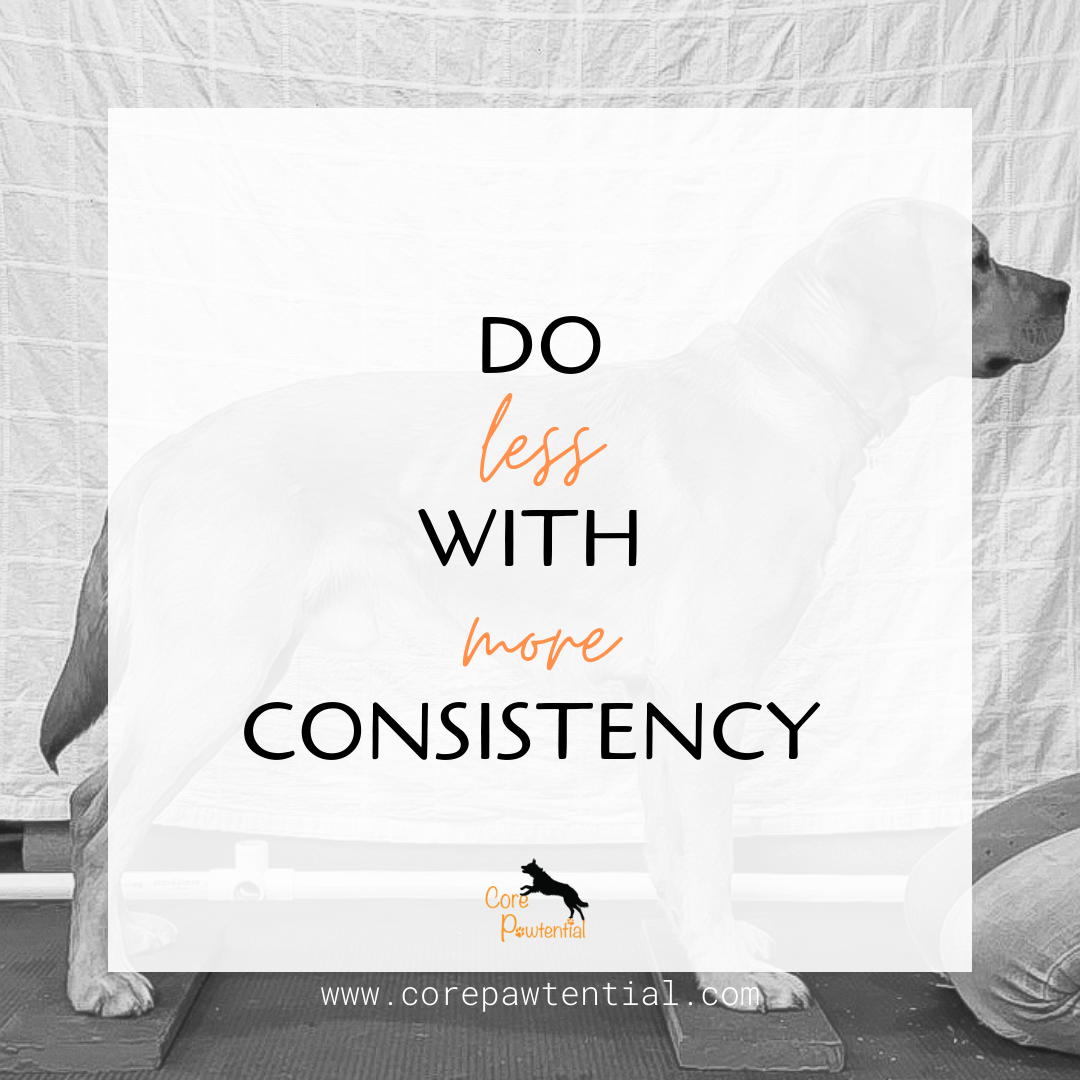
Do LESS with MORE consistency
April is National Canine Fitness Month!
One of the most frequently asked questions clients ask me is “How often should I be exercising my dog?”
My answer is always, “It depends.”

Straight line cavaletti
My second cavaletti module, Cavaletti Module 2: Straight line cavaletti, is now online and freely available!

Preparing for cavaletti
Pre-cavaletti skills are simple, low-impact, and appropriate for dogs of all ages, breeds, and lifestyles.
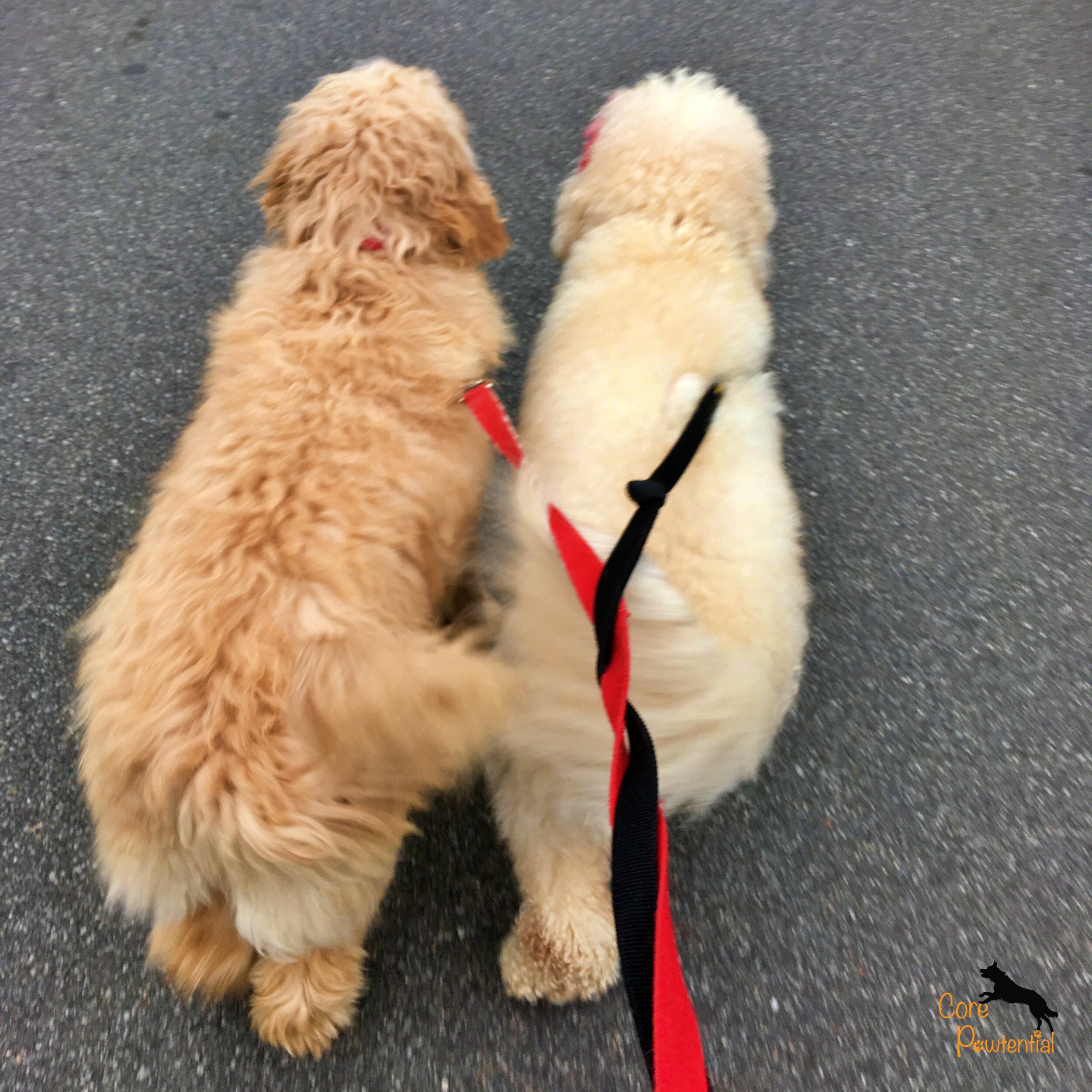
For dog’s sake, please walk your dog
To this day, it never fails to amaze me how many people do not walk their dogs daily. I consider walking my dog(s) a responsibility that comes with having a dog. Unless there are special circumstances (e.g., brutal heat, torrential rain, severe weather warning) or health issues (e.g., dog sick and/or injured), there has never been a day when I do not take my dog(s) out for at least one walk.

Conditioning can be simple, but they are not easy
Conditioning exercises can be simple, but simple exercises do not mean they are easy.
In fact, simple exercises are often some of the best exercises to identify issues that need improving.

Know better, do better, be better
I used to think that agility is great. Just a few years ago, I thought that agility would be a great outlet for active dogs who enjoy doing "stuff," and for their guardians who would like to strengthen their bond with their dogs by doing "stuff" together.
